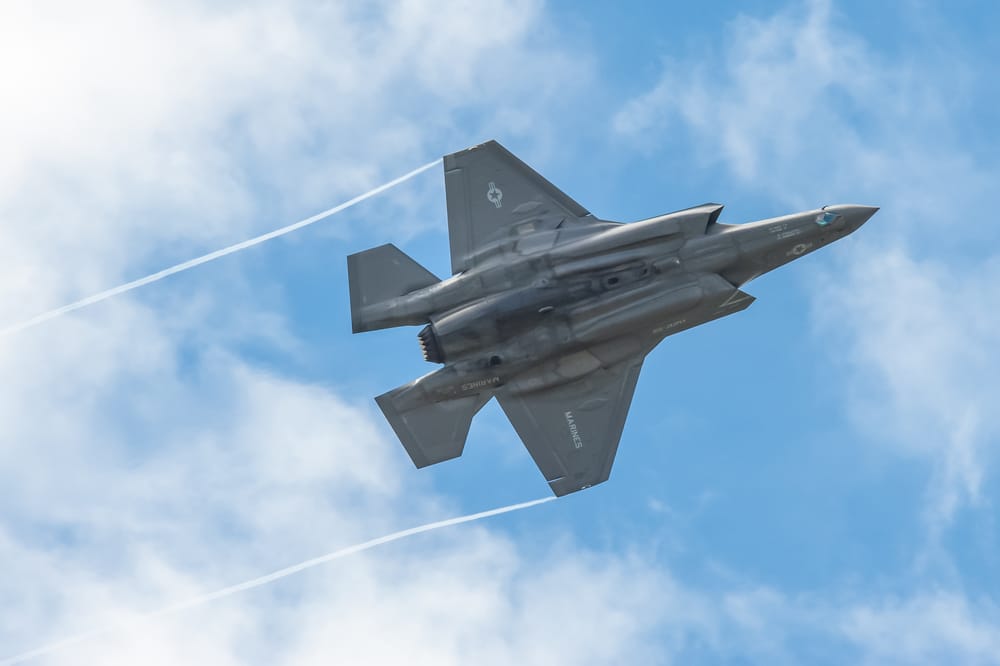Recently, the U.S. Marine Corps lost (and later found) an F-35 aircraft. The circumstances are mostly undisclosed or rumor based, though that is to be expected in regards to such a sensitive matter. While it has become a comical example of incompetence, it’s not the worst thing that the U.S. military has lost.
They’ve also lost nuclear weapons…on a few occasions.
The U.S. term for it is “Broken Arrow.” There have officially been 32 reported incidents involving Broken Arrows. Lost ‘nukes’ outside of the United States are unknown, given that not all national governments are as open with information. The U.S. has admitted that six nuclear weapons remain lost. During the reign of the Soviet Union, it is possible that such weapons also went missing, especially in the chaotic years following the break up when ownership and security of the strategic arms repeatedly changed hands or remained in limbo.
Another concerning reality is that Soviet era “suitcase sized” nukes may also be unaccounted for. Retired Russian General Alexander Lebed has claimed that as many as one hundred such devices are likely missing. These one kiloton ‘mini nukes’ assigned to Spetznaz special forces are not only the perfect weapon of terror, but are small enough that they could be misplaced in a storage facility somewhere slowly “cooking” until the moment of accidental detonation. That is the real concern for all of the missing nukes. If the safety mechanisms on them fail or erode, they may someday detonate with random carnage. Given that all seem lost in remote locations, there is still a risk of harming the innocent, not to mention the environmental impact such an event would cause.
The first Broken Arrow occurred in February 1950, when a B-36 bomber, while experiencing mechanical issues, dropped an atomic bomb over the Pacific Ocean near Princess Royal Island. The Mark 4, 30-kiloton (Fat Man) bomb is still missing to this day. Four more accidents in 1950 occurred with U.S. bombers carrying nuclear weapons over American soil. Thankfully none of the accidents resulted in nuclear detonation.
In March 1956, a B-47 bomber crashed in the Mediterranean sea with two nuclear cores onboard. The bomber, its crew, and their nuclear devices remain missing. During a training mission in February 1958 another USAF B-47 bomber carrying a Mk 15 atomic bomb collided with an F-86 Sabre fighter jet. The bomb was dropped over Wassaw Sound before the crew could attempt an emergency landing. The crew survived, though that bomb remains missing also.
Such accidents and the potential for further Broken Arrows increased during Operation Chrome Dome, an ambitious readiness routine that kept U.S. nuclear bombers airborne 24hrs a day. Armed and constantly flying, at least a dozen strategic bombers remained capable of hitting the Soviet Union in response to any attack around the clock. In 1961, early into Chrome Dome, a B-52 crashed shortly after take off in North Carolina. One of its 24-megaton nuclear bombs remains missing. Another bomb from this incident that was recovered showed that three out of the four arming mechanisms had been activated; fortunately, there was no nuclear explosion from this mishap. The other missing bomb’s safety mechanism status remains unknown, along with its whereabouts.
It was not only the Strategic Air Command that lost nukes. The U.S. Navy had a Broken Arrow in December 1965, when an A-4 Skyhawk armed with a one-megaton thermonuclear bomb fell off the flight deck of the aircraft carrier, USS Ticonderoga. The Skyhawk, its aviator, and bomb remain missing around 500-miles from land beneath the waves of the Pacific Ocean. In the spring of 1968 the USS Scorpion sank 400 miles southwest of the Azores Islands, taking with it the lives of 99 crew members and a pair of nuclear tipped weapons. These nuclear weapons and their radioactive material remain deep under the ocean, and only time will tell what long term damage such weapons will cause.
An incident that was considered one of the worst nuclear accidents of its day occurred in January 1966 when a nuclear weapon splashed under the waves close to Spanish fishermen near the Alboran Sea, meanwhile three thermonuclear bombs crashed into the countryside outside the village of Palomares, spreading radioactive plutonium. The U.S. government conducted an extensive clean up, shipping thousands of tons of contaminated Spanish soil back to the United States. The area remains contaminated still to this day, and the missing bomb is somewhere under the water.
Other Broken Arrows are as follows: two bomber accidents in 1956, three in 1957, six in 1958, four in 1959, one in 1960, three in 1961, another in 1963, three more in 1964, up to three in 1965, another in 1966, three for 1968, one for 1969, one in 1975 and one in 1980. A further seven more accidents occurred up until 2000.
Each of these incidents involved American or Russian aircraft or submarines and some ended with a loss of life, but with the potential to cause a catastrophic mass death event. That’s not to mention the environment damage that is likely being felt to this day. The safety protocols on these devices have been proven to be life saving, and clean up operations have been thorough or at least as best able to manage. That is when a clean up occurred at all or when any recovery was possible.
It is unknown what other nuclear armed governments have experienced and whether their weapons have undergone accidents and losses. Given the sheer number and regular movement of their arsenals, it stands to reason that the United States and Soviets would experience more accidents than other, smaller powers. We can assume these governments have better safety standards and training in regards to such weapons. It’s hard to imagine that Pakistan, North Korea, or even China would have the level of training and practice when it comes to handling such weapons compared to the United States. Then again, by having far less of them available, it stands to reason that they may be a little less reckless with the deployment of such weapons. Future accidents and losses involving nuclear weapons remains likely.
We are sliding into a world of frightened global environmental awareness, notably under the blanket of “climate action.” Governments across the planet are taking it upon themselves to tax and grow in the name of green policies. The truth of the matter is that government is not only wasteful and destructive (even when well meaning), but it’s also often incompetent and reckless. The placard of environmental protection is the fixture for future policies based on altruistic sloganeering. ‘Save the planet’ has become a mantra for public servants to spit out while they consume resources, blow the planet to pieces, and steer society into a path that in the years to come will be as dangerous to nature as current policies.
There was a time when the wider public and most conscientious activists were concerned by nuclear war and the catastrophic effects of just one bomb detonating, let alone numerous. It seems that with the climb into yet another cold war and the irrational desire for jingoism that the potential for nuclear Armageddon has been forgotten, or is at best a distant nightmare of a prior generation. The energy to save the planet is alive and well, but it has become hijacked by awareness advocates and big government careerists who wish to just paint the status quo green. Heightened tensions between powers capable of destroying the planet with nuclear weapons is dangerous, for both the obvious, direct implications of war but also because we may see a return to the Broken Arrows of the past. Losing an F-35 shows that there could again be the loss of a cheaper nuclear tipped system that may fall from or be lost with another aircraft. We know it’s possible because it’s already happened.
To imagine that the biggest government in the world has time and time again not only poisoned the planet with chemical defoliants, plumes of death from burn pits, scattered bombs over civilians, sprayed herbicides in the hopes of curbing drug production, pumped depleted uranium into each war zone it’s created, dropped mega litres of jet fuel into the ocean, ruined sea life with naval activities, and dropped numerous atom bombs all over the place…but as it turns out, has lost some too.
While it’s unlikely a third party will find them first, those unaccounted weapons of mass destruction linger as a potential danger that in time may leak or explode with catastrophe. No amount of benevolent prayers for a big government solution will every fix the culture of government itself.
Humanity and our planet deserve better than to be constantly left in the hands of central planners who rule with both cynicism and incompetence. Even well meaning reformers drown in such a work place. If another world war is not a bad enough prospect, losing the weapons intended to wage it certainly won’t save the world.
The missing F-35 was found after a few days. The nukes, if anyone in the government is even still looking, may turn up when we least expect it. Life on Earth is too precious to constantly be put at risk with such contemporary and political stupidity. How many of these regimes and administrations can the planet survive? The only green government is the one that does not exist. If you want to fix the planet then we need to get out of its way and let nature heal. And there is no tax for that; for the destroyers of the world, that’s precisely the problem.
















